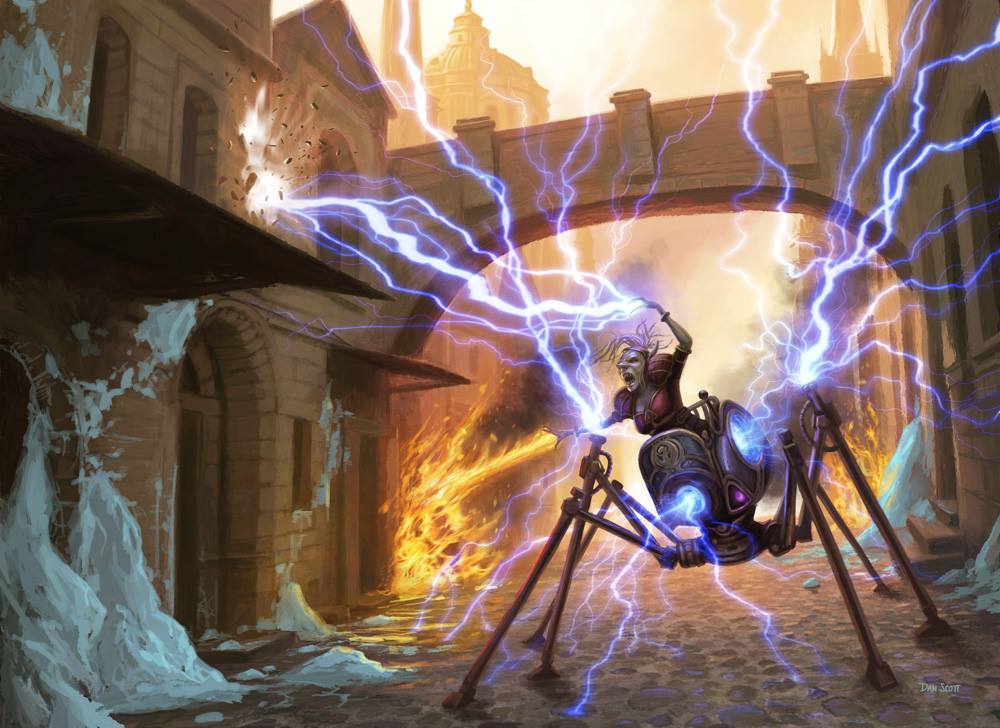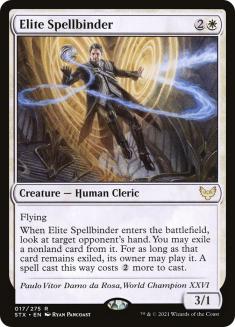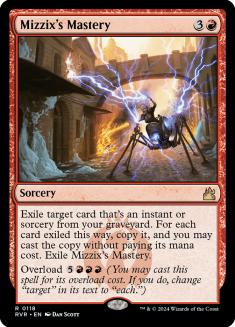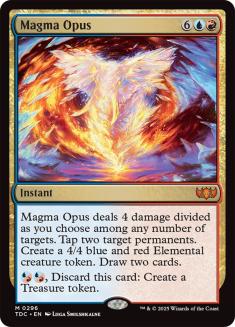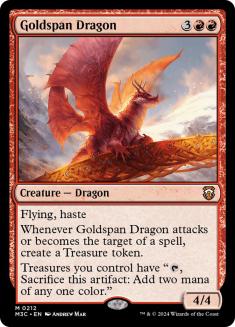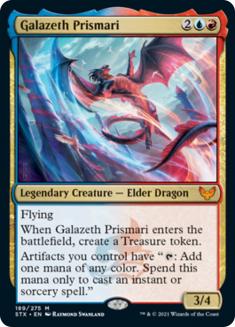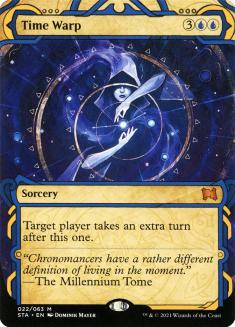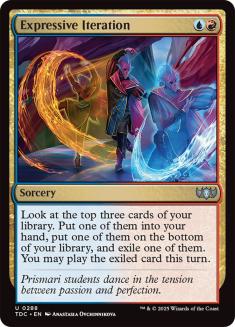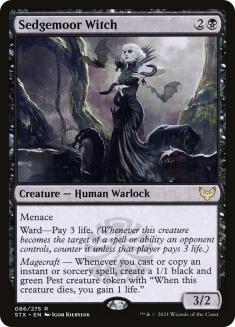Strixhaven was officially released last weekend, though the set had been legal online a week earlier. That means we’re effectively two weeks into exploring the set, with the first weekend focused on Historic and last weekend focused on Standard, the two most important formats for competitive Magic.
Early thoughts on the set were highly pessimistic due to the set’s apparent drop in power level relative to other recent releases, especially Throne of Eldraine. But as preview season went on, some cautious optimism snuck in, as players started discovering some powerful synergies within the set that they missed at first glance.
The results from these last two weekends lie somewhere in the middle. The textures of both Standard and Historic haven’t changed much, but there are certainly some cards making an impact. Today I’m going to look at a few cards that have exceeded expectations in these early weeks, and some that have fallen short. For each one, I’ll also offer a prediction of whether these early results are real or if we should expect the card’s fortunes to turn around moving forward, for better or worse.
Winner: Elite Spellbinder
The latest card to feature the likeness of a professional player, Paulo Vitor Damo da Rosa as Elite Spellbinder unsurprisingly acquitted himself quite well last weekend. Mono-White Aggro❄ continues to be a player in Standard, putting up solid results in the SCG Tour Online Satellites last weekend before a mediocre result in the Strixhaven Championship Qualifier on Sunday, winning under 50% of its matches. It did however crack the elimination rounds in the hands of Paolo Prenassi, in part due to the addition of a full playset of Elite Spellbinders:
Creatures (35)
- 4 Giant Killer
- 4 Alseid of Life's Bounty
- 2 Drannith Magistrate
- 1 Lurrus of the Dream-Den
- 4 Seasoned Hallowblade
- 4 Selfless Savior
- 2 Legion Angel
- 4 Skyclave Apparition
- 4 Luminarch Aspirant
- 2 Reidane, God of the Worthy
- 4 Elite Spellbinder
Lands (24)
Spells (1)

With Reidane, God of the Worthy; Maul of the Skyclaves; Skyclave Apparition; Archon of Emeria; and Lurrus of the Dream-Den, the three-mana spot on the curve was already crowded, but Elite Spellbinder is powerful enough that players are making space. Being able to delay a key sweeper or Cultivate for two turns is often enough to win the game, and the information Spellbinder provides can help the Mono-White deck know when to extend, when to hold back, and how to use their limited amount of interaction.
I wholly expect Spellbinder to be a staple of this archetype moving forward, and a staple in most white-based aggressive decks during its time in Standard. It’s not the kind of card that you’re going to build a deck around, but it’s great on rate and fits seamlessly into aggressive strategies, a great role-player.
In fact, it’s such a great role-player that it’s even seeing play in Historic, where it appears as a four-of in both Selesnya Company decks that made the Top 4 of this past weekend’s Insight Esports tournament:
Creatures (33)
- 4 Llanowar Elves
- 3 Scavenging Ooze
- 1 Rhonas the Indomitable
- 4 Lovestruck Beast
- 4 Skyclave Apparition
- 4 Archon of Emeria
- 4 Luminarch Aspirant
- 4 Kazandu Mammoth
- 1 Reidane, God of the Worthy
- 4 Elite Spellbinder
Lands (20)
Spells (7)

Selesnya Company emerged as a metagame deck of sorts, preying on the popular Mayhem Devil strategies with maindeck copies of Yasharn, Implacable Earth. But this metagame has far fewer of these decks to prey on and neither Company list from the Top 4 features Yasharn, even in the sideboard. That’s indicative to me that Selesnya Company is ready to compete on its own merits, even as the metagame continues to shift with time.
And the only real difference between then and now is the addition of Elite Spellbinder. It’s a great hit off Collected Company, a great Turn 2 play after a Turn 1 Llanowar Elves, and a great target for Luminarch Aspirant. Selesnya decks aren’t known for interacting all that much, which is often what holds them back, so Elite Spellbinder is playing a critical role here against everything from Dimir Rogues to Izzet Phoenix, where snagging a key Faithless Looting could completely destroy their gameplan.
With so many Mystical Archive cards receiving all the hype for Historic, it’s impressive that Elite Spellbinder stole the show. It’s not the flashiest card around, but it sure seems to win a lot. Kind of like Paulo.
Loser: Mizzix’s Mastery
If Elite Spellbinder is the unsung hero that just does job well with little fanfare, Mizzix’s Mastery is its opposite, a very powerful, jumps-off-the-page effect that fell flat when the lights went on. I saw people casting Emergent Ultimatum on Turn 3 in Historic with it, or setting up Mind’s Desires in their Storm decks. But it’s nowhere to be found in the major tournament results. For now, it certainly appears that Mizzix’s Mastery is more of a meme than a dream.
Few players enjoy a good combo deck more than yours truly, so I’d love to give these decks a spin, but there’s too much good, cheap disruption available in Historic, especially with the addition of Inquisition of Kozilek and Memory Lapse, for these decks to compete. They aren’t fast enough to avoid the disruption or resilient enough to win through it.
The latter issue is even more of a problem for Mizzix’s Mastery, since it’s dependent on the graveyard in a metagame that spent the last three weeks preparing for Arclight Phoenix. Between Scavenging Ooze, Cling to Dust, and cards like Scrabbling Claws, it’s hard to set up a four-mana flashback card.
Incidental graveyard hate is quite valuable in Historic with Arclight Phoenix, Dreadhorde Arcanist, and Dimir Rogues all playing a major role in the metagame, so I don’t see this problem going away any time soon. Mizzix’s Mastery decks must rely less on that card in order to succeed, and right now I don’t think they have the tools to do that. I’m putting this card on the back burner for now, because it’s definitely powerful enough to compete in the right shell, but we’ll have to get some new toys before that shell materializes.
Winner: Magma Opus
It hasn’t been all bad news for fans of big, splashy effects, since Magma Opus has made its presence felt across a range of formats. In Standard, Magma Opus is the big payoff for decks leaning into Treasure tokens with Goldspan Dragon and Galazeth Prismari. It’s one of the few new archetypes that made some waves last weekend, though those waves were admittedly small.
Creatures (15)
Lands (25)
Spells (20)

You may recognize this as somewhat derivative of the Izzet decks that performed well early in Kaldheim season but were quickly supplanted by the likes of Mono-Red Aggro❄ and Sultai Ramp (Yorion), but I think this deck represents a significant step forward in power level and a major shift in strategy.
Those decks were conflicted between playing a pile of instant-speed card draw spells and counters while trying to resolve a Goldspan Dragon. If they had a window to tap out and not get punished, everything went smoothly, but that window was tough to find against opponents who came prepared to stop it. This deck, with the addition of Galazeth Prismari, is now able to lean fully into being a midrange deck that wants to tap out consistently, and it has just enough counterspells to protect its key threats for a turn.
Without weak cards like Behold the Multiverse and with a fully developed Treasure engine, you can also play some haymakers to break open games that go long, and that’s where Magma Opus shines. The effect itself is powerful enough to break open a game, and along with Alrund’s Epiphany gives the deck great topdecks going long. But what separates Opus is the activated ability. Being able to make a Treasure early means you can afford to play the full four copies and not have them clog your draws.
Expensive spells, by virtue of their raw power, have a high ceiling. But their cost also gives them a low floor. Magma Opus’s activated ability raises its floor considerably, and that’s why we’re seeing it have so much success. I’m a much bigger believer in the Izzet deck than I was last season, and though it may not crack the highest echelons of the metagame, this iteration will maintain a significant presence for more than a couple of weeks.
Magma Opus has also made its presence felt in Historic and even Pioneer, where the synergy with Torrential Gearhulk has brought the latter back from obscurity. I don’t expect Torrential Gearhulk to become a major player like it was in its Standard days, but it’s certainly an option for control players out there to mess around with. I’m mostly excited that the card with by far the best name in the set is good enough that I’ll get to say it plenty in the coming months, if not longer.
Loser: Time Warp
Even more than Mizzix’s Mastery, Time Warp was supposed to reshape Historic. Simic Nexus is still fresh in everyone’s mind and a lot of the tools from those decks are still around. Explore and Growth Spiral are ideal ramp spells, since they accelerate early and dig for extra Time Walks late. Tamiyo, Collector of Tales shuts down opposing discard spells while ensuring that you’ll find more Time Walks. And Nissa, Who Shakes the World is an ideal win condition that can win games even if you only take a couple of extra turns.
With all these tools, it’s no surprise that some players decided to take the deck into battle for the Insight Esports event, whereas Mizzix’s Mastery was virtually invisible. But unfortunately for Time Walk aficionados, the results were far from inspiring:
21 matches is a tiny sample, so this result is far from definitive, but wow is 4-17 a bad record. Almost unbelievably bad. I’ll expect some innovation from committed Time Warpers but that number is going to be enough to keep most players from even picking up the deck, despite the small sample size.
Ultimately I think Taking Turns is going to be a metagame deck. It’s effectively the best haymaker strategy, but it’s vulnerable to decks that go underneath it and decks that are full of cheap counters. Right now both of those strategies are well-represented with Gruul Aggro and Dimir Rogues among the most popular and best-performing archetypes in the metagame. Time Warp must wait for a better moment to capitalize on slower midrange decks like Jund Food.
Winner: Expressive Iteration
It’s been a good two weeks for the Prismari House, with Galazeth Prismari, Magma Opus, and Expressive Iteration all seeing significant play, and Primari Command not far behind. But Iteration has been the most impressive of the bunch, since it has broken through in Standard, Historic, and Modern, establishing itself as a potential multi-format staple.
In Standard you can see the full four copies in the above Izzet Dragons list, where in Historic it’s seeing play in many Izzet Phoenix lists. But I’m going to focus on its place in Modern, where you can find it in Izzet Prowess, pushing out former staple Light Up the Stage:
Creatures (16)
Lands (18)
Spells (26)

Never costing one mana in a deck built around casting lots of spells in one turn is a drag, but never costing three when you have to dig for another threat is nice, and since one of the cards goes to your hand, it’s more likely you’ll get the full two-for-one with Expressive Iteration than with Light Up the Stage. Add in the additional card selection from digging three deep and I think the new card comes out ahead in the comparison.
With cards like Chart a Course and Night’s Whisper, we’re used to seeing two-mana Divinations that have some sort of drawback, but Expressive Iteration is often a Divination with upside. Starting on Turn 3, you can exile a land from the top three cards and play it for turn while taking a spell into your hand. And later in the game you should have enough mana to take two spells and cast one immediately, getting full value so long as the top of your deck isn’t land-heavy.
Expressive Iteration hasn’t been universally adopted by any of the archetypes in which it’s currently played, but I expect that to change as more people see it in action. Simply put, it’s one of the best cards in Strixhaven, and these first two weeks are just the beginning.
Loser: Sedgemoor Witch
I’ve been having a great time playing Sedgemoor Witch with Plumb the Forbidden in various shells on VS Live! so I was excited to see what other players would come up with to take advantage of what in my mind was one of the most exciting new cores to build around. But neither card made an impact over the last two weeks, leaving me quite disappointed.
Even worse for Sedgemoor Witch, it was left out of the only Sacrifice deck to put up a notable finish last weekend, Florian Klein’s Mardu list:
Creatures (15)
- 2 Woe Strider
- 2 Kroxa, Titan of Death's Hunger
- 2 Serrated Scorpion
- 2 Immersturm Predator
- 3 Extus, Oriq Overlord
- 4 Eyetwitch
Lands (22)
Spells (23)

With Plumb the Forbidden joining other cheap spells Claim the Firstborn and Village Rights, as well as the small learn package, it looks on paper at least that Sedgemoor Witch would be an easy inclusion. But the consistency of Woe Strider won out here, as well as having a maindeck escape card against Dimir Rogues. I’m sure you could build a sacrifice deck that’s more magecraft-focused with even more cheap spells, but you have to question if that is worthwhile.
That said, there are so many options for these decks that I remain optimistic about them. You can move more into magecraft with cards like Leonin Lightscribe and Clever Lumimancer. You can play green for Witherbloom Apprentice and Lovestruck Beast. And blue is always a strong option when you’re looking for cheap spells. Opt and Sea Gate Stormcaller would both be welcome additions alongside Sedgemoor Witch.
Any one of these colors could fill out a deck, and then you have to consider three-color variants as well. That’s a lot to parse through and test before arriving at a tuned list. This far into the Standard year, you’re competing against powerful, tuned lists, so it can take some time for new shells to reach the point where they can compete with the established archetypes. So I’m not giving up hope yet. I’ve seen what Sedgemoor Witch and Plumb the Forbidden can do together, and it’s incredibly powerful.
It’s pretty clear at this point that Strixhaven as a whole, even with the Mystical Archive, isn’t going to make any major changes to the current metagames. But there are definitely some hits in the set, and I’ll be excited to see what it can do as players delve further into it, and especially in the fall once Throne of Eldraine rotates out of Standard. That’s when we’ll all appreciate the set for being less powerful, so let’s make the best of it until then.

